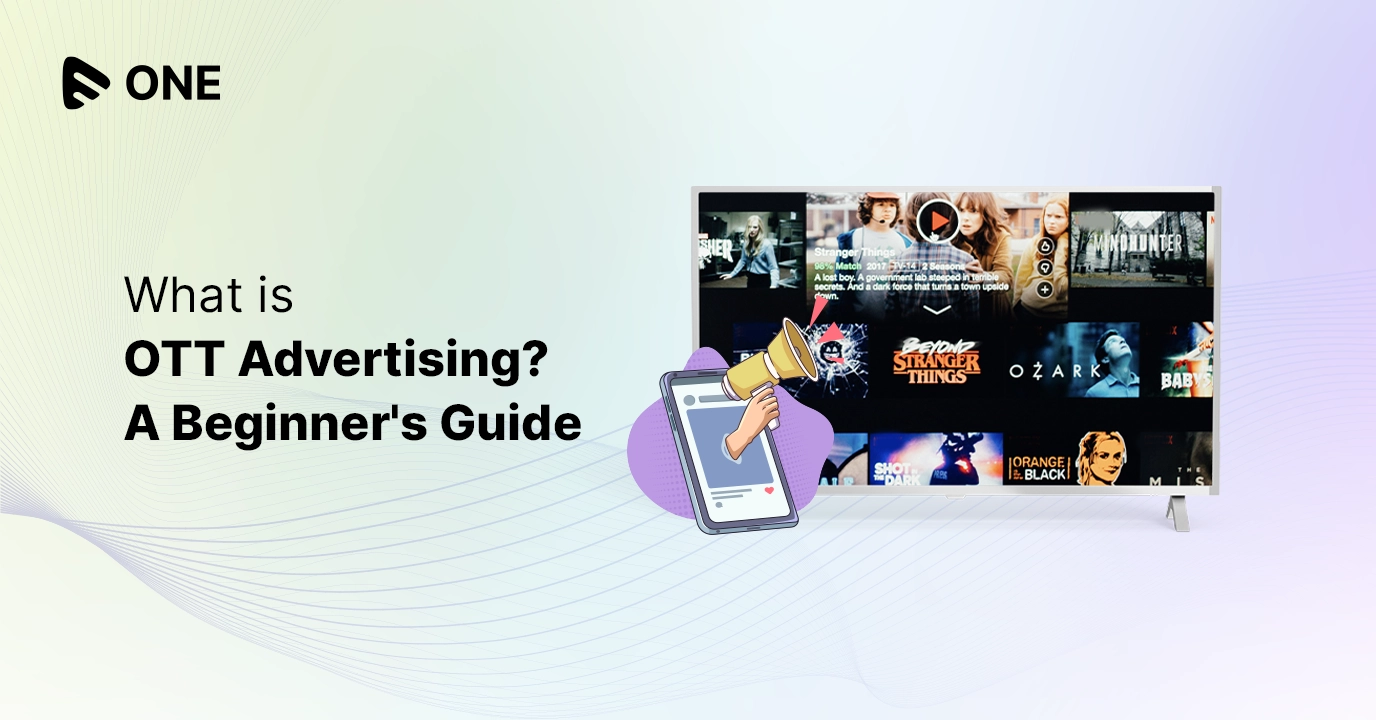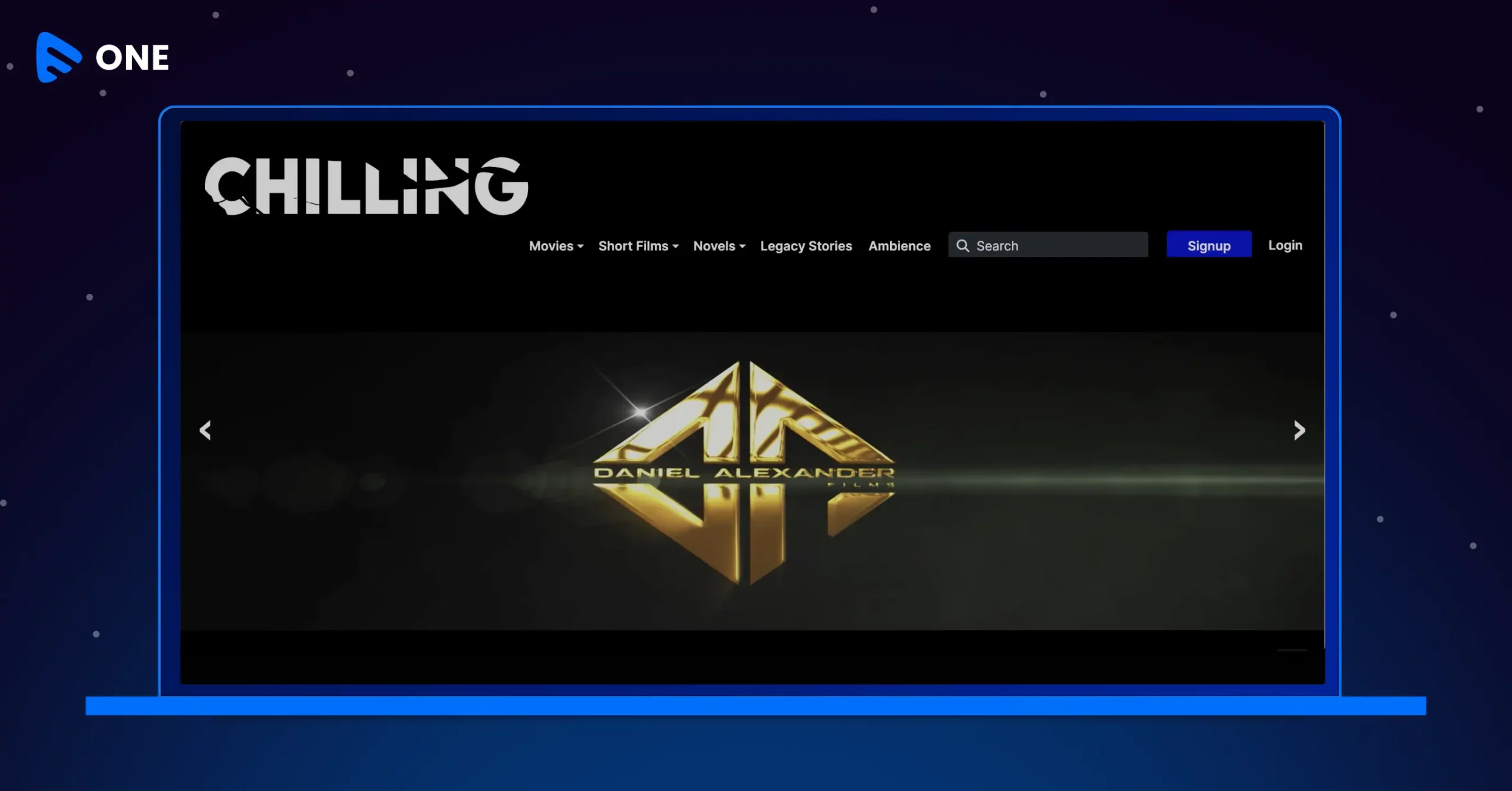Advertising has gone online. Today with the help of the right marketing on the internet, people can make themselves visible all around the globe via the internet. A large chunk of the internet audience consumes OTT content and therefore if you are planning to be online, you have to understand how OTT advertising works. By the end of this blog, you will have an idea about what OTT advertising is and how you can create a platform that lets you earn from advertisers.
What is OTT Advertising
OTT advertising refers to advertising that is delivered through over-the-top (OTT) platforms which are primarily broadcast and streaming services that provide live and recorded video as well as audio content using the internet thus bypassing the traditional cable and satellite TV providers.
Nowadays, with more and more people being connected to the Internet and consuming all types of content from these OTT platforms, OTT Advertising has obviously been welcomed with more and more businesses advertising and selling their products using the Internet. With the increase in the number of devices, the types of devices have also increased. People can today enjoy a match of football on their smartphones while traveling, on their laptops while working, on a giant 65-inch screen while at home, and so on. OTT Advertising lets you run ads on the devices of all these audiences as per your budgets and that is what makes it a better choice.
Facts About OTT Advertising
- OTT revenue generated from video advertising, or deploying an advertising video-on-demand (AVOD) model, is projected to reach $318 billion by 2027.
- The Number of OTT AVOD Video consumers is expected to reach 3,44 billion by 2027 with 53% estimated user penetration.
- The global OTT market was valued at $171.36 billion in 2020 and is projected to be worth $1.04 trillion in 2027. That’s a CAGR of 29.4%.
- OTT subscriptions in the United States will jump from 230 million in 2021 to over 277 million in 2026.
OTT streaming is a booming industry and to understand this industry, Muvi has done deep research on the OTT projection estimates of various regions of the globe. Download reports now to know more about the future of OTT.
How Does OTT Advertising Work?
To advertise on an OTT platform, you can work directly with the platform or use an advertising platform that specializes in OTT advertising. It’s important to choose the right ad format for your campaign and target your audience effectively.
The process of advertising on OTT (Over-The-Top) platforms typically involves the following steps
- Define your Target Audience: Before you begin advertising, it’s important to define your target audience. Each product is designed to cater to a specific range of audiences that can be segregated using age, gender, location, etc. Select the right audience for maximum ad effectiveness by doing thorough product research.
- Choose the right platform: There are many different OTT platforms to choose from, such as Netflix, Hulu, Amazon Prime, and Disney+. It’s important to select a platform that aligns with your target audience. For example, if you are into selling sports merchandise, you may target ads on Hulu when there is a live sports tournament coverage like FIFA or Grand Slams.
- Choose your ad format: OTT platforms offer different ad formats, such as in-stream ads, sponsored content, banner ads, native ads, and branded integrations. Each of these ad formats is effective but depends on how you place them. For example, a very important product update that you want your audience to know can directly be done via brand integration. This can be costly but will ensure maximum outreach.
- Create your ad: Creating your ad may involve working with a creative agency to develop a compelling ad that will engage your target audience. General trends suggest that smaller ads have a lesser probability of getting skipped.
- Set your budget: Determine how much you want to spend on your OTT advertising campaign. This will depend on factors such as your campaign goals, target audience, and ad format. For example, let’s assume you are selling sports merchandise for a 2-month sports event. Now people will buy merchandise to support their team and they will do so only during the tournament. You get the time frame here. Similarly, through market study, create a budget based on all attributes.
- Launch your campaign: Once your ad is created and your budget is set, it’s time to launch your campaign. Work with the OTT platform or advertising platform to launch your campaign and track its performance.
- Monitor and optimize your campaign: As your campaign runs, monitor its performance and make adjustments as needed. This may include changing your target audience, adjusting your ad format, or increasing or decreasing your budget.
By following these steps, you can effectively advertise on OTT platforms and reach your target audience in a meaningful way.
Types of OTT Ads & Devices
- In-stream Ads: In-stream ads are ads that appear before, during, or after a video on an OTT platform. These ads can be skippable or non-skippable and are usually 15 to 30 seconds long.
- Banner Ads: Banner ads are static or animated ads that appear on the screen while a user is watching content on an OTT platform. These ads are usually located at the bottom or top of the screen.
- Native Ads: Native ads are ads that blend in with the content of the OTT platform. For example, a sponsored post on an OTT platform’s social media page could be considered a native ad.
- Long Ads: Ads can be run during breaks. With sports streaming shattering all records, long-form ads or ads longer than the 30s can be placed during breaks. The Indian Premier League, currently in its 16th edition runs ad between breaks.
These OTT ads can be run on so many different platforms and devices. The primary reason why OTT advertising is the present and future of advertising is the fact that it caters to a very large audience that is connected to the internet. Here are a few devices that support OTT advertising.
- Smart TVs: Many modern smart TVs come with built-in OTT apps such as Netflix, Hulu, and Amazon Prime Video, making them a popular platform for OTT ads.
- Streaming devices: Streaming devices such as Roku, Apple TV, Chromecast, and Fire TV stick are popular platforms for OTT ads as they provide access to various OTT apps.
- Gaming consoles: Consoles like PlayStation and Xbox also offer access to OTT apps and can be used for OTT advertising.
- Mobile devices: OTT ads can be run on smartphones and tablets through various OTT apps like YouTube, Hulu, and Netflix.
- Desktops and laptops: Desktop and laptop users can view OTT ads through web-based OTT apps or streaming services like Amazon Prime Video or Hulu.
- Set-top boxes: Cable or satellite set-top boxes that provide access to OTT apps such as Netflix and Hulu can also be used for OTT advertising.
With so many devices supporting OTT ads, all you need is the right strategy to market your product or service online.

Types of Ad Insertions
Ads can be inserted into the video feed in two ways.
- Client-Side Ad Integration: It is the more popular way of inserting ads throughout the video. Here all the ads are prefixed by the client before the viewer starts to watch the video. Ad blockers sometimes manage to block these ads thereby creating problems for advertisers.
- Server-Side Ad Integration: A more active way of ad insertion, the ads inserted here come dynamically from the server side thus making it difficult for ad blockers to restrict ads. It is more expensive when compared to CSAI but yields better results.
Benefits of OTT Advertising
- Targeted Advertising: OTT advertising allows businesses to target specific audiences based on demographic information, interests, and behaviors. This means that businesses can deliver ads to people who are more likely to be interested in their products or services, increasing the chances of conversion.
- Cost-effectiveness: Compared to traditional TV advertising, which can be expensive, OTT advertising can be more cost-effective. Advertisers can set their own budgets and pay only for the impressions they receive thus reducing cost and giving opportunities to pivot strategy.
- Measurable results: OTT advertising provides businesses with detailed analytics on how their ads are performing. Advertisers can track metrics such as impressions, clicks, and conversions, allowing them to measure the success of their campaigns and make data-driven decisions in the form of reports shared by the ad agency or OTT platforms.
- Flexibility: With OTT advertising, businesses can quickly and easily adjust their campaigns based on performance data. They can change targeting parameters, creative elements, and messaging to optimize their campaigns for better results.
- High engagement: OTT advertising offers a high level of engagement, as viewers tend to be more focused on the content they are watching. Additionally, OTT platforms often have interactive ad formats, such as interactive overlays and shoppable ads, which can increase engagement and drive conversions. Where there is a mass audience, the chances of business are naturally more. OTT streaming is the most popular form of consuming content so high engagement is guaranteed.
Challenges Faced by OTT Advertising
With great power comes great responsibility. OTT Advertising has several unique attributes that make it a good choice for advertisers. However, it comes with its own set of challenges too.
- Ads can be irritating. This is the reason why many users are shifting to the SVOD model of content consumption. Youtube, the flagbearer of OTT advertising success also now sells a no-ad version. Reaching the right audience, therefore, becomes difficult.
- There are so many OTT platforms available in the market with each one fighting for viewership. Selecting the right platform to run your ad thus becomes crucial and difficult.
- Technical issues such as buffering, and latency can impact the ad experience thus impacting its effectiveness and performance.
- The world is slowly getting aware of the importance of data privacy. Collecting and sharing data is therefore very risky and can lead to lawsuits.
Regardless of these challenges, the OTT advertising industry is evolving. It is highly effective but the challenges must be addressed to fully realize its potential.
Get Muvi One to Build Your OTT Platform
When OTT advertising has become such a thriving industry, and if you are thinking about creating an OTT platform to run ads and earn revenue, get Muvi One today. Muvi One is a no-coding OTT streaming software solution with which you can build your own OTT website, mobile and TV apps, live streaming channels, etc. instantly.
Supporting all types of monetization, Muvi One lets you accept payments from all around the globe in multiple currency types and also supports carrier billing for countries with low credit card penetration. A completely no-code platform, Muvi One lets you build your OTT platform for apps and browsers without having to write a single line of code.
















Add your comment